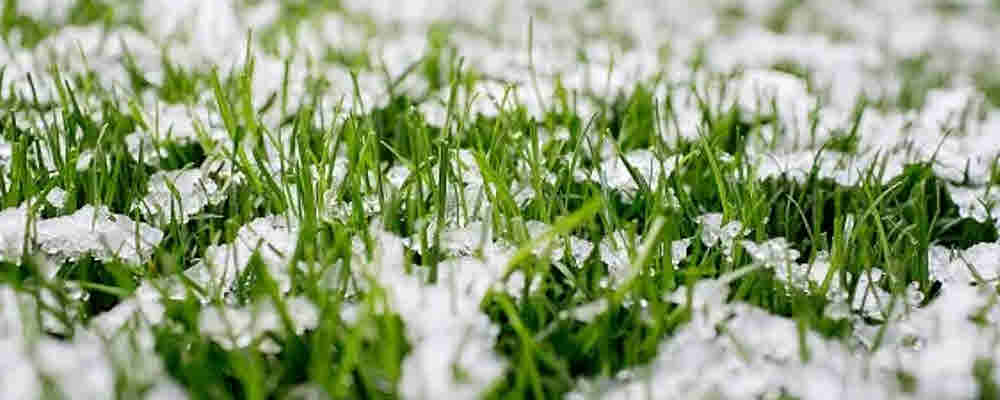Preparing Your Lawn for Winter
As the seasons change and winter approaches, it’s essential to prepare your lawn to ensure it remains healthy and vibrant when spring arrives. In preparing your lawn for winter in different climates around the world, we will give you basic tips for specific strategies to protect and maintain your lawn during the colder months. Here’s a comprehensive guide to help you prepare your lawn for winter, tailored to various global climates.
General Tips for All Climates
- Clean Up Debris: Remove fallen leaves, branches, and other debris from your lawn. This prevents mold and diseases from developing under the snow or during wet conditions.
- Aerate the Soil: Aerating helps to relieve soil compaction and allows water, nutrients, and oxygen to reach the grass roots more effectively.
- Fertilize: Apply a slow-release fertilizer to provide essential nutrients that will help your lawn survive the winter and green up quickly in the spring.
- Mow Properly: Gradually lower the height of your mower blades as winter approaches. This helps to prevent snow mold and other fungal diseases.
- Watering: Ensure your lawn is well-watered before the ground freezes. This helps the grass to stay hydrated during the winter months.
Preparing Your Lawn in Cold Climates

In regions with harsh winters, such as North America, Northern Europe, and parts of Asia, lawns face freezing temperatures, snow, and ice.
- Winterize Your Irrigation System: Drain and shut off your irrigation system to prevent pipes from freezing and bursting.
- Apply a Winter Fertilizer: Use a fertilizer high in potassium to strengthen the grass and improve its cold tolerance.
- Overseed with Cool-Season Grasses: If your lawn consists of warm-season grasses, overseed with cool-season varieties like ryegrass to maintain some green cover during winter.
- Snow Management: Avoid piling snow on your lawn, as this can lead to compaction and damage the grass. In case you do pile snow on your lawn, avoid piling snow containing salt or road-dirt. In case there is a lot of snow on the grass, gently remove the snow and try to find another place to store the snow till spring time.
Applying calcium to your lawn is a great way to improve soil structure and pH levels. The best time to apply calcium is in the fall or early spring. Consider this as part of your “Winter Care”. In the fall, the soil is still warm enough for the calcium to be absorbed before the ground freezes. Early spring is also a good option because it allows the calcium to work into the soil before the growing season begins.
Just be sure to avoid applying it during the peak of winter when the ground is frozen, as it won’t be effective. A soil test can also help you determine the specific needs of your lawn.
Preparing Your Lawn in Mild Climates

In areas with mild winters, such as the Mediterranean, parts of Australia, and the southern United States, lawns may not face extreme cold but still require preparation.
- Continue Mowing: Keep mowing your lawn, but at a slightly higher height to protect the grass from potential frost.
- Monitor Watering: Reduce watering frequency but ensure the lawn remains hydrated during dry spells.
- Weed Control: Apply a pre-emergent herbicide to prevent winter weeds from taking over your lawn.
- Mulch Leaves: Instead of removing all fallen leaves, mulch them into the lawn to provide organic matter and nutrients. You can do this easily by using your lawn-mover without collecting the grass-clippings and leaves. Spread them gently between the grass evenly.
Also in a mild climate, Calcium can still be beneficial for adjusting soil pH and improving soil structure. AS the ground generally doesn’t freeze, you can be much more flexible in applying calcium. As with any lawn care regimen, conducting a soil test first is a smart move. It will help you determine if your lawn actually needs calcium or if there are other nutrients that would be more beneficial.
Preparing Your Lawn in Tropical Climates

In tropical regions, such as Southeast Asia, Central America, and parts of Africa, lawns experience warm temperatures year-round but may face dry or wet seasons.
- Adjust Watering: During the dry season, increase watering to prevent the lawn from drying out. During the wet season, ensure proper drainage to avoid waterlogging.
- Pest Control: Tropical climates can be prone to pests. Apply appropriate treatments to keep pests at bay.
- Fertilize Regularly: Use a balanced fertilizer to maintain lawn health throughout the year.
- Mow Consistently: Regular mowing helps to keep the lawn neat and prevents the growth of weeds.
In tropical climates, where warmth and humidity are consistent, the approach to lawn care can differ a bit from colder or Mediterranean regions. Here’s what you should know about using calcium:
- Timing: You can apply calcium almost any time of the year since tropical climates don’t experience extreme cold. However, avoid the rainy season as heavy rains can wash away the calcium before it has a chance to be absorbed by the soil.
- Frequency: Depending on your soil’s pH and calcium levels, you may need to apply it annually or biannually. Soil testing will give you a more precise schedule.
- Application Method: Use gypsum (calcium sulfate) if you’re also looking to improve soil structure and drainage, especially in clay-heavy soils. Dolomitic lime is another option if your soil also needs magnesium.
- Avoid Over-application: Too much calcium can lead to nutrient imbalances in the soil, making it harder for plants to absorb other essential nutrients like magnesium and potassium.
As always, conducting a soil test before making any amendments will help you understand your lawn’s specific needs.
Conclusion

Preparing your lawn for winter is crucial to ensure its health and vitality come spring. By following these tailored tips based on your climate, you can protect your lawn from the challenges of winter and enjoy a lush, green lawn year-round. Remember, the key to a healthy lawn is consistent care and attention, regardless of the season.
